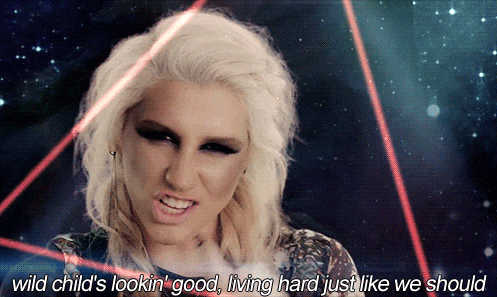With the school year starting up (or coming quickly), the idea of homework has begun to take over the lives of students. Or maybe just this student. The work itself is rather dependent on the classes you take and your major, if you are in college. Most of my friends are in some sort of science class and have begun studying for quizzes and upcoming tests. However, as a Communications and Creative Writing major, the majority of my assignments consist of writing--essays, short responses, book reviews, research projects, you name it. Because I deliberately take classes of this nature, writing comes easier to me than it does most of my friends. I remember helping my friends both in high school and college learn how to construct theses, topic sentences, and arguable points.
And so, I would like to introduce to you a new series of articles: Writing Tips with Alex.
Today's topic: The Introduction
1. What is an Introduction?
The purpose of the introduction is pretty self explanatory. You are writing a brief overview (an introduction) to the topic of your paper. Make sure you keep that in mind as you writing: you are introducing the topic of your paper to your reader.
2. What do I include in an Introduction?
One of the best pieces of advice I got for writing introductions (and the rest of a paper) is to assume your reader has never read what you are writing about, usually in the case of literature. Is there any outside information about the book/author/topic the reader needs to know in order to understand your argument? Is there background on a theory you talk a lot about that needs explaining? If you have done extensive research for your paper, it is likely your reader may not have done the same. Write so your reader can hop right into the paper and get something out of what you say, instead of being confused.
3. What do I NOT include in an introduction?
This is probably more important than what to include. What tends to happen is writers include information in their introductions that does not help the reader understand the overarching argument. While the introduction does not actively argue a point, it should also not be a "filler paragraph," or a place to write random information to take up page space. For example, if a student was writing about Harriet Beecher Stowe's experience with racism and slavery and how they influenced her novel Uncle Tom's Cabin, then it would make sense to include the author's birthday in the introduction. However, if a student was writing about The Adventures of Huckleberry Finn as a bildungsroman (coming of age story), she would not include the birthday of Mark Twain in her introduction. If you are still confused, then read over your introduction and ask yourself "If I had to, could I relate this sentence to the topic of my paper?"
4. What does an Introduction look like?
An introduction can be a total of four sentences, or it can take up the whole first page; it depends on how comfortable you are in your writing. Look at the sample introduction (written by yours truly some time ago) below:
“Conceal, don’t feel, don’t let them know.” (Elsa, Disney’s Frozen) Similar to how the society of Arendelle pressures Elsa into suppressing her different qualities, and isolating herself from the kingdom, conformist societies in literature force estranged characters into concealing themselves due to their abnormalities. Mary Shelley and Doris Lessing create characters that society sees as dangerously different, and as a result, it attempt to maintain control over them. Through the settings in their novels Frankenstein and The Fifth Child, Shelley and Lessing show that society quarantines those it deems abnormal due to its desire for conformity.
This introduction follows a simple outline that I highly recommend for beginning writers: the Inverted Introduction. Following this helps one include relevant information in their introduction and abstaining from filler details. Below, I will break it down sentence by sentence so you can see the mechanics behind it.
(I will preface this by saying not all teachers like this kind of introduction. It was the kind my high school used, and by practicing it, I was able to expand from it in college. I will say I had a teacher last semester who was very against it. If that happens, ask your teacher what s/he is expecting.)
The Inverted Introduction: an introduction that starts very broad, but gets more specific with each sentence.
Sentence 1: The Hook. This is the first sentence of your entire paper. The goal with this sentences is to make your paper sound interesting. I tend to start with an outside quote that relates to my thesis or the theme of my paper (see #3). Have fun with this! I remember I quoted "Let it Go" from Frozen for an essay I wrote about society's tendency to quarantine those who do not conform to social standards. I had a friend in the class who quoted Ke$ha for every essay.
Example Thesis: Through the settings in their novels Frankenstein and The Fifth Child, Shelley and Lessing show that society quarantines those it deems abnormal due to its desire for conformity.
Example Hook Quote: “Conceal, don’t feel, don’t let them know.” (Elsa, Disney’s Frozen)
See how that correlates? If the prospect of finding a quote seems daunting, don't feel obliged to use one. You can write a sentence that both introduces your topic in an alluring way. You can tell a humorous anecdote, cite a definition, or reveal an intriguing statistic or fact.
Sentence 2: This is where you explain your quote and how it relates to the topic of the paper. At this point, we are not talking in terms of specific research materials, such as books or research reports that the paper itself uses as resources. Remember, we are not getting to the nitty gritty detail at this point. We need to remain rather broad still.
Example: Similar to how the society of Arendelle pressures Elsa into suppressing her different qualities, and isolating herself from the kingdom, conformist societies in literature force estranged characters into concealing themselves due to their abnormalities.
Sentence 3: This is where we tie in the topic to the specific studies, reports, articles, and books that our paper is based on. As you can see in the previous example, we learn that the topic of the paper is about forcing people who are different into isolation, away from the rest of the "functioning" society. Now, how does this relate to your research material? Do certain characters in the novel you read have similar traits? Was there a study you read with statistics to back this claim up? Get a little more specific.
Example: Mary Shelley and Doris Lessing create characters that society sees as dangerously different, and as a result, it attempt to maintain control over them.
Sentence 4: The Thesis. I will do a detailed article about the thesis at a later date. All you need to know for now is that the thesis is the argument of the paper. By this point, the reader knows how a particular topic appears in the particular research resources, but why is that significant? Why should the reader care? Why is that specific topic in the book/paper/article? What is the point?
Example: Through the settings in their novels Frankenstein and The Fifth Child, Shelley and Lessing show that society quarantines those it deems abnormal due to its desire for conformity.
5. When do I write the Introduction of my paper? Many writers start their essay with the introduction--they feel they cannot start the paper any other way. However, others prefer to discover their topic as they write the bulk of their paper, and therefore find it difficult to start by introducing the topic. Honestly, it depends on the person. Do not feel obliged to start with the introduction if you are struggling.
Happy writing, friends!























